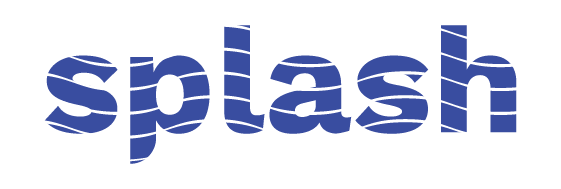Splash No. 224 - Where One Thing Ends

Where One Thing Ends
After reading this brilliant Jenny Odell talk transcript, I’ve been fixated on the limits and dangers of creating sharp borders between ideas and beyond.
In one section, Odell talks about the endosymbiosis theory developed by biologist Lynn Margulis. The core idea of this theory is that the mitochondria that serve as the powerhouse of our cells were originally bacteria that entered a symbiotic relationship with our distant ancestors. At some point, the boundary between these two organisms disappeared and they began to exist as one, until we’ve gotten to our current point, where every cell of every animal, plant, and fungus has a mitochondrion keeping it going. Margulis extended the theory to other bacteria in and around our bodies, saying “[b]eneath our superficial differences we are all of us walking communities of bacteria. The world shimmers, a pointillist landscape made of tiny living beings.”
It feels so strongly in contrast to the way that we live our lives, constantly demarcating where each of us end and the rest of the world begins, as if we’d completely disappear without these arbitrary lines we draw. These acts of division are egoistic in a way but also feel necessary, since the most common means of expression are to put ourselves into clean little boxes on various forms of social media. So we cleanly slice ourselves into individuals in order to try and make things easier to explain and digest. And that often ends up feeling incomplete in different ways. We are each ecosystems of the bacteria as Margulis said, but additionally we are parts of many more ecosystems, from the various living things in our homes (from bacteria to roommates) to the many others we interact with throughout our days. Beyond the ecological, we are parts of countless larger systems that may not physically exist that shape us as we shape them — our families, our friendships, our jobs.
I’m truly fascinated by how little our feelings of individualism seem to reflect the realities of the world we live in, how narrow-minded of a focus it is, and how it limits our own beliefs about ourselves. Not only do we limit ourselves to thinking as individuals instead of parts of a larger whole, but we frequently imagine ourselves to be a single thing — just our jobs, or just our hobbies, or something else entirely. We draw boundaries between the different aspects of our being rather than imagining a holistic whole that seems more accurate.
I’ve been spending time trying to figure out how to make this newsletter better. It seems unclear to me, not because I feel like I’ve become the perfect writer, but because I’ve been wondering if I’ve drawn too strong of a line between my writer self and the rest of myself. Perhaps I have.

I love this graphic that Odell had in her piece comparing the “blobby self” with the “fortified self”
I find myself returning to a meditation I once found that calmly stated “you are the universe experiencing itself from a human perspective.” I never fully understood what it meant, but I think I’m getting closer — the boundaries around us are less real than we think, there’s less separating me and the bacteria and the air and the trees than I thought. And you too.
Drops of the Week
ALBUM - FEET OF CLAY by Earl Sweatshirt - it's 15 minutes long so I listened to this on loop for a few hours
VIDEO - Why this football pass seems physically impossible by Vox Media - apparently a perfect spiral is an anomaly for how most objects travel through the air
POEM - "The Heart Is Not" by Danusha Lámeris - It does not tear / at the seam. It doesn’t have / a seam.
Donate to Abortion Funds Mutual Aid Networks
Thanks so much for reading! If you're not already subscribed, I'd love for you to subscribe here. You can also check out my older newsletters here.
Also, I'd love to hear your thoughts— you can reply to this email if you loved or hated the letter, or you want to tell me about how your day has been. I'm all ears.
Without boundaries,
Nikhil

